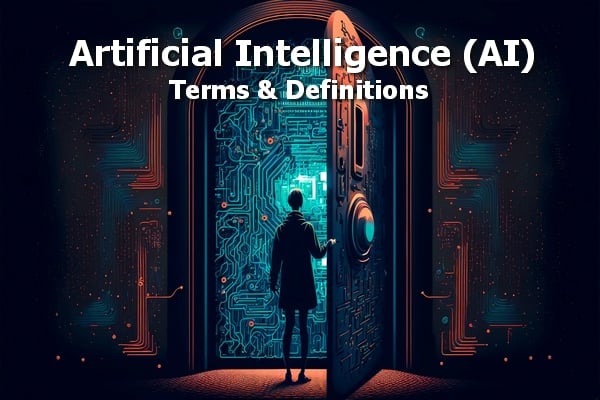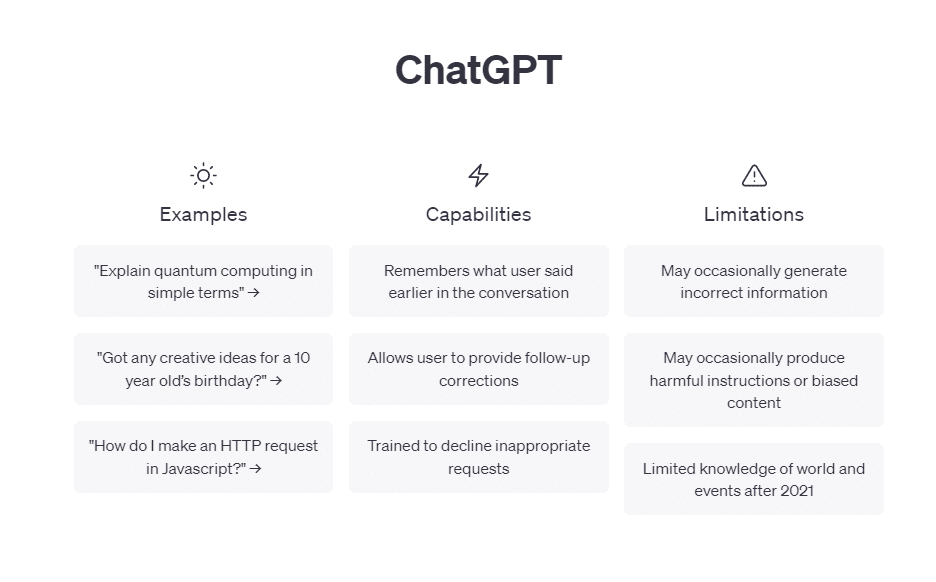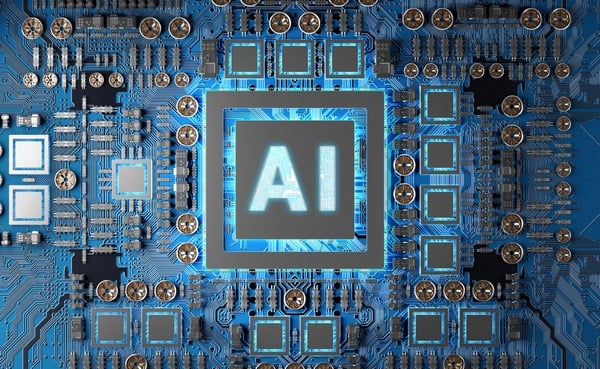An Artificial Intelligence Text Generator App Primer
AI Terms and Definitions and Chatbot app terminology.
In November 2022, ChatGPT – a new generative text app – was soft-launched to the broader public. The ‘formal’ launch of ChatGPT followed in early 2023. Since then, the ‘Artificial Intelligence (AI) generative text revolution’ has infiltrated our lives.
More evolution than revolution, by mid-2023, millions of users relied on ChatGPT for document editing, complex coding, business operations, and even personal messaging improvements.
Statista researchers estimate that by the year 2027 an estimated 90 million people will search the web using AI-driven apps (such as ChatGPT) versus searching via Google and/or other internet browsers. This represents a significant transition in how we access data in the internet.
As of 2025, most of us are familiar with these apps and AI app terminology. Given their widespread popularity, you’ve likely tried AI-powered query response apps yourself. You may even be using ChatGPT, Gemini and similar apps daily (or even hourly), depending on your job role and/or writing skills.*
*Common uses for AI-generating apps like ChatGPT or Gemini (Bard) include but are not limited to creating or curating content, developing outlines, drafting policies, rewriting email communications, finessing sales pitches and marketing materials, generating article summaries, answering tech and coding questions, and other uses.
In this article, we will review AI app terminology for text-generating (chatbox) apps to bolster your knowledge in this ever-emerging tech field.
This article was first published on 30 May 2023, and updated on 28 January 2025.

Brief History of AI-text-generating apps
When did ChatGPT launch and is it relatively new?
- ChatGPT (essentially a ‘chatbot’ app) was soft-launched in late 2022.
- Google’s Bard was soft-launched a few months later, in March 2023 (the app was later renamed to Gemini).
- Yet AI-driven ‘chatbot’ apps (text generators) have been around for a very long time.
- The difference is that AI-response-generating technologies are far improved and much removed from earlier chatbox apps.
What differences exist between historical chatbots vs. modern AI-powered text-generative apps?
Newer text-generating apps such as ChatGPT or Gemini (Bard) use far larger datasets (large language models known as ‘LLMs’), faster processing speeds, and more sophisticated computer programming sciences such as ‘self-learning’ algorithms.
They are far more powerful than previous apps.
Another pertinent difference is that AI-driven apps are now de rigueur for personal communications, as opposed to being solely used for business communications (as they were in the past). Millions of people have trialled these apps, or are likely to do so in the future.
Compared to modern AI-driven apps, earlier ‘chatbot apps’ had the following weaknesses:
- Earlier apps ran on much smaller datasets.
- They used rudimentary “if/then” programming and less sophisticated algorithms.
- They offered limited responses to keywords/key phrases.
- They were not adept at ‘self-learning’ when they responded erroneously to an input or request.
- For example, when someone types the words “‘get me a real human” in ALL CAPS, or
- Screams ‘Get me a real person, not a bot!’ while engaging with voice-recognition tech.
Today’s AI-driven text generating apps, such as ChatGPT and Gemini (Bard), are capable of responding to questions in nuanced, human-like ways. They offer powerful, time-saving solutions for a variety of industries and job roles. They also self-correct over time (they are programmed to self-learn, albeit with some limitations). They can enhance the analytical superpowers and the communication capabilities of ‘everyday humans’.
Source: OpenAI ChatGPT, Reuters, et al.
How popular are AI-text-generating apps?
- The combination of power and widespread use makes AI-driven text-generating apps integral to modern lifestyles in developed countries.
- User numbers for AI-powered text-generating apps will continue to grow rapidly; so will potential applications for AI-driven technologies.
- Growth rates for AI-text-generating app use will require reliable computing systems, internet capacity, and energy sources, however; and not all regions will gain access to these empowering technologies.
How many people are currently using ChatGPT and similar text-generating apps?
- ChatGPT gained 100 million users in its first 3 months (an unprecedented early adoption rate in the entire history of computer science technologies).
- Chat GPT now has over 180 million registered users (data as of December 2024).
These apps are powerful, but they are not without controversy.
What are the drawbacks of ChatGPT and similar AI-powered apps?
- Most modern AI-driven text-generating apps were launched in an ‘experimental stage’ of development and use.
- At the same time, important nuances were still under discussion (e.g., AI ethical concerns, inherent biases, privacy concerns, criminal-use potential, copyright infringements, plagiarism risks, etc.).
- AI-app popularity also comes at a cost to our environment and resources.
- Modern AI-driven apps and LLM datasets use massive amounts of energy, water, and data storage space compared to previous chatbox apps.
AI-Text-Generating Apps: Trends and Adoption Curves
Who uses AI-generating apps like ChatGPT and Gemini (Bard)?
- Tech users of all skill levels and ages continue to register for AI-driven text-generating apps.
- AI tech adoption rates for ‘text generators’ are occurring at a faster rate than any previously launched computer-based technology adoption in history.
- Advanced technologies generally attract a limited number of highly skilled computer users.
- In contrast, ChatGPT and Gemini (Bard) apps appeal to a broader user base that includes tech-savvy users as well as tech-fearing individuals.

Regulations & GMP Guidance Trends for AI-driven Apps
- Tech-adoption curves for ChatGPT, Gemini (Bard) and other AI-powered generative text apps are unparalleled.
- Although massive early adoption rates for new tech products are something developers often dream of achieving, the speed of AI-app uptake left developers, government agencies and ‘preppers’ with ‘app use scenario’ nightmares.
- As we enter the third year of everyday AI-tech use, the regulations have simply not kept up with the pace of AI-tech developments, particularly in the medical and pharmaceutical sectors.
That noted, AI-app regulatory guidance publications are currently entering preliminary approval stages.
- Examples include the recent FDA guidance publications (2024 & 2025) covering machine learning, SaMD products and AI-app change control planning requirements).
- Subsequent changes in the US landscape could lead to further AI advancements as well as potential rework of pending regulations and regulatory compliance guidelines.
- Debates continue as leaders disagree on priorities, with some speculating that AI regulations aimed at ensuring safer, more reliable AI technologies, could “hamper progress.”
Machine Learning, AI-App Regulations and Company Policies
- Technological advances generally precede risk management controls, such as regulatory guidance and organisational policies.
- When ChatGPT and Bard were first released, regulations and policy guidelines for those types of AI-driven apps either:
- Didn’t exist,
- Were in early draft stages and typically outdated before their finalisation, or
- Were still being debated around the globe.
- Regulatory guidance publications are slowly trickling into the regulatory landscape.
- As above, however, these publications are subject to changes including ‘starting from scratch’ with changes to Government Agencies in the US and other regions.
- Technological changes remain likely to outpace regulatory protections (by some degree).
Developers, businesses, governments, and education providers continue to explore how to best manage AI-tech use risks vs benefits. The AI app horse bolted early and fast, however. Reigning AI in to ‘best practice use scenarios’ is going to be challenging for all industry stakeholders, life sciences included.
Additional Resources
AI Terminology, Definitions and FAQs
Defition and explanation of AI-text-generating apps (Chatbots, ChatGPT, etc.)
- These apps are software programs designed with sophisticated algorithms, massive datasets, and self-improving AI technologies, that will respond to a user-prompt (question or request) much the same as a human assistant would – only faster, and with less complaining.
- AI-driven technologies like ChatGPT and Bard can generate responses to queries in a matter of milliseconds (perhaps microseconds).
- These apps are ’empowered’ (coded) to be ‘self-learning’ and to ‘auto-correct’ outputs based on user ‘feedback’ (behavioural and keystroke analysis).
- The drawback? AI-driven responses can contain incorrect information, such that only a human with detailed knowledge of the subject area would be able to assess for accuracy or relevancy.
How AI-generating text apps actually work
- ChatGPT, Bard and similar apps work by taking a prompt (an input such as a question, request or instruction) and responding with an output based on its massive dataset (the LLM mentioned previously).
- Questions or requests (referred to as ‘prompts’) are typed or spoken into a dialogue box via a cloud-based app (internet access is required).
- Images and videos can also be uploaded to some AI-driven ‘generating’ apps, along with a prompt (e.g., ‘revise this image to include a tree with blue leaves’).
Examples: you can prompt ChatGPT or Bard to fix your grammar (rewrite this for clarity), generate a research summary, draft an outline for your University paper or even write the entire paper itself (if permitted by the University’s policy on AI use, albeit such permissions are unlikely)!
It can generate themed party invitation ideas, write a cover letter or rejection letter…just about anything you ask it to do (the clarity of your prompts is crucial for a workable result).
Prompt Examples (ChatGPT queries/chatbot questions)
How to word questions for AI-generated responses
Here are some example questions you can ask OpenAI’s ChatGPT. Note: the free version of ChatGPT relies on a dataset that only includes data up to 2021. We’ll discuss such limitations further in Article 2 of this series.

For examples of queries for Google’s ‘Bard app’, click here.
ChatGPT vs Google Searches (Internet Searches vs AI)
How are AI chatbot apps different to search engines like Google or Bing?
There are a few key differences between google searches and ChatGPT responses to queries or prompts.
AI-driven query response apps synthesize information for you, in well-formed paragraphs or image selections, in response to your query inputs. Search engines, on the other hand, generate a bunch of links, sponsored content (advertisements), and snippets, which may or may not be useful to you.
So instead of sponsored content, snippets or web page links, query response apps can can generate detailed paragraphs and topic summaries specific to your questions or commands.
- There are also pros and cons to ChatGPT, Bard, and search engines including Google.
- This is true for all computer science technologies and new developments.
- We’ll discuss the pros and cons of AI chatbot apps, and how they are similar or different to established search engines, later in this article series.
While different, both technologies rely heavily on sophisticated algorithms. In recent months, Google has been modifying its own search result pages to mimic the AI-text-generators.
Chatbots – Definitions and Background
Artificial Intelligence (AI) chatbot technology = AI-generated query response software/apps
A ‘chatbot’ is a computerised program (software or app) designed to simulate conversation with human users, over the internet. Early chatbot technologies were generally used on company and government websites. They were programmed to automatically “answer” commonly posed questions from an organisation’s client base or prospective customers.
- Chatbot technology has mostly been used to answer questions posed by website visitors, on a 24/7 basis (without the need for additional personnel or any personnel at all).
- Chatbots are often routinely deployed to reduce labour costs and/or improve efficiency.
- They can be useful (or equally useless) on shopping websites or during service outages, supply chain issue updates, widespread billing errors, etc..
They are not necessarily useful for good customer service, however. These chatbots generally failed to recognise the crux of a problem and/or failed to provide the appropriate client-desired solution.
Most consumers found early-version website chatbots to be frustrating, restrictive, and inept.
- But new chatbox AI-powered (LLM-based) technologies are likely to generate warmer, quasi-relevant replies that sound like humans.
- These AI-generated responses may include problem recognition and empathic language about that problem.
Whether new AI-generating response apps will improve customer service ratings, or be able to offer client-desired solutions, is yet to be seen.
The real benefit of using newer AI chatbot technologies is in the context of having a ‘data savvy digital assistant’. An assistant you don’t have to provide coffee for. An assistant who doesn’t get cranky when you ask it for a task at ten minutes before 5 pm on a Friday. One on call for you, day or night, to help you accomplish a task or writing assignment on a very tight deadline.
AI Terms and Definitions related to Text Generators
FAQ: What is Artificial Intelligence (AI) in the computer sciences?
AI stands for artificial intelligence (AI), a computer science field. Definitions of Artificial Intelligence (AI) technologies include concepts such as ‘machine learning’ or ‘deep learning’, datasets, and algorithms.
Advanced algorithms can generally generate responses to questions (queries) a lot faster than humans can, and these responses are often more accurate or use better grammar – but not always).
FAQ: Algorithm (AI definition):
The term algorithm represents a sophisticated mathematical equation (a coded/programmed component of a computer program) that helps answer a question and/or solve a problem.
- AI-driven technologies can be thought of as computer software programs/apps that use “mathematical models of data” to help the program or apps “learn, without direct instruction from a human” (Source: Cambridge)
- In simpler terms, these computer programs (apps and devices) are ‘smart’ technologies; and they are programmed to enhance their ‘smartness’ over time.
FAQ: What does the term ‘AI-generating’ chatbot or ‘text-generative app’ mean?
AI-driven chatbots like ChatGPT and Bard describe software/applications (apps) intended to produce relevant outputs by combining:
- Sophisticated programming that can mimic human language responses to questions (queries)
- Analytical capabilities/algorithms and parameters
- Extensive datasets (very large databases)
They can enhance human performance with minimal oversight – a Supervisor’s dream assistant. But AI chatbots can also get things ‘wrong’. Very wrong*. And they are not always as ‘self-reflective (or self-improving) as a person likes.
*Even dead wrong, as detailed in their disclaimers and ‘use terms & conditions consent waivers’.
- Checking AI-generated content before use remains critical to managing AI app risks.
- So oversight (checking, editing, and tweaking) of AI-generated output is not necessarily going to be minimal.
AI terms for content-generating apps, such as ChatGPT and Bard, include ‘query response generators’ or ‘language generators’, ‘AI chatbots’ and ‘AI-generating applications’.
FAQ: What is the legal definition of AI?
The Legal definition of AI (artificial intelligence), as published by Cornell University with data sourced from US Code § 2358 notes, is as follows:
AI is “Any artificial system that performs tasks under varying and unpredictable circumstances without significant human oversight, or that can learn from experience and improve performance when exposed to data sets.”
FAQ: Which job roles & industries will benefit most from AI-response-generating apps?
The time-saving, productivity-enhancing aspects of “query response generating” apps like ChatGPT and Bard will depend on numerous factors. Productivity influences for AI-generating response apps/chatbots include:
- How adept the app is at generating relevant and correct responses to queries
- Algorithms and datasets
- Accessibility
- Weak points
- How adept the user (querist) is at query-writing or parameter-setting
- Computer skills and language skills (‘input’ skill sets)
- Ability to phrase questions that generate relevant responses (outputs)
- Experience with AI technologies including search engines
- The industry and intended uses for AI-generated information
- AI-tech user’s knowledge directly relevant to the topic being queried and the intended use of AI-generated information
FAQ: How much time can you save by using ChatGPT or Bard?
Examples from respected trend analysts, such as Statista and Hubspot, along with my personal experiences, suggest individuals with marketing, sales and writing roles may be able to save 2 to 3 hours each day by deploying AI chatbot technologies.
That is, so long as they deploy these technologies in an effective manner.
When a professional and/or sales rep can gain (save) an extra 10 hours of time each week, every week of the year* by using apps like ChatGPT, imagine the potential productivity gains. Imagine the potential sales income increases!
*So long as the internet is working.
(And imagine...what could possibly go wrong? Which we’ll cover in Article 2).

FAQ: Differences & Similarities between Bard and ChatGPT versus Search Engines
- AI-generating apps like ChatGPT and Bard have some similarities to browser searches.
- However, they are notably different to searching for information using a browser app/search engine such as Google.
- The answer to “Which is better, ChatGPT or Bard, or a Search Engine like Google or Bing?” depends on:
- Your intention for AI-generated information
- Your usage plans (what you plan to accomplish with AI-response queries)
- What you already know about the query topic
- How skilled you are at optimising certain types of algorithms
ChatGPT, Bard and similar Ai-generating apps are generally more efficient at answering questions and generating information than simply searching in a web browser. They are not necessarily accurate (more on this later). But they do offer efficiency gains.
That’s because:
- When using web browsers/search engines, you generally have to:
- Search for (sift through, and visit) various sources of information (web pages) individually
- Choose between (or ‘weed out’) sponsored answers to search terms (advertisements)
- Read/absorb long texts or web page links from websites with unknown reliability
- Use your brain and writing skills to paraphrase, summarise or tweak your discoveries
- When using AI-generating ‘query response apps:
- The software can gather, synthesise, and rephrase information from a very wide variety of sources, somewhat instantaneously
- It may sometimes arrive in a ‘nearly ready to use for content’ state (emphasis on ‘sometimes’)
- You will still need to use your brain, your subject knowledge, and your writing or editing skills to tweak the content to suit your intended purpose
- You may also need to dig further (and/or use a search engine like Google or Bing) to verify the information source and information reliability
- Because the AI-generated response information in these apps isn’t linked with the source of the data
- And it just might have been ‘scraped’ from a popular tinfoil-hat-wearing person’s dubious website rather than the Mayo Clinic’s website pages, Harvard’s website, Oxford’s website, or Cambridge’s.
Summary of Article 1 of 2 Articles in the blog series covering AI-Terms & Definitions and Adoption Trends of Chatbot Apps.
In summary, you may be able to use AI-generated content without spending a lot of time paraphrasing the query outputs or conducting further research. These apps often do a fairly good job summarising information in response to well-structured questions and other inputs.

But, as you’ll soon discover, the output likely still “needs work” – sometimes a lot of work!
Sometimes, AI-generated output will be so erroneous it will need to be thrown in the garbage bin (deleted). Or the AI app will be asked to ‘start over’ and generate a new response (which it can do quickly, without complaining as a human might when asked for a ‘do overs’ with a better prompt).
Generative text apps are powerful, but far from perfect.
AI-generated content might be entirely useless at times. More often than not, this relates to a prompt error (a problem with question phrasing).
Either way, even if your prompt is perfect, you will always need to verify the accuracy and appropriateness of AI-generated content for your intended use/purpose.
GMP Industry Warning on AI Software Uses
If you work in a regulated industry (such as pharmaceutical manufacturing, medical devices or medical software production, therapeutic goods warehousing and distribution, medicine labelling and packaging, etc.):
- You will need to conduct and document a risk analysis for the AI-driven software.
- You will need to document all stages of development, testing, implementation and monitoring.
- You will need to implement data integrity assurances relevant to the intended use of the software or its outputs (AI-generated query responses).
- You’ll need to ensure your employee’s use of AI-driven software meets regulatory requirements for computerised systems used to perform or enhance GMP activities.
- You need to validate your methods, computerised systems, algorithms and processes.
Current Regulatory compliance requirements for GxP/GMP computerised systems (including software components/algorithms) include:
- Data integrity requirements (GMP guidance for data governance)
- The FDA’s Computer Software Assurance (CSA) guidelines
- GxP Computerised Systems guidance as detailed in ISPE’s GAMP5 (2nd edition)
- PIC/S Annex 11
- Good Recordkeeping Practice (GRK) and Good Distribution Practice (GDP) regulations
- Software as a Medical Device (SaMD) regulations
- FDA requirements for Clinical Trial computer systems/data storage
- Other relevant guidance for batch records, computer systems, and cybersecurity measures
Be sure to keep an eye on the ‘AI software regulations’ space. New AI-app regulations are likely to be published regularly, particularly as these apps are increasingly being used in the development and manufacture of therapeutic goods and in healthcare settings, hospitals, and radiology departments.
2025 FDA Guidance on AI / SaMD and Machine Learning
FDA Guidance for AI-driven apps in 2025: Relevant to SaMD products and other AI-driven medical-use software:
FDA Change Control Plan Guidance for AI-driven apps / SaMD (published in December 2024)
Draft Guidance: Artificial Intelligence-Enabled Device Software Functions: Lifecycle Management and Marketing Submission Recommendations (Published in January 2025)
Summary
If you are already using these apps regularly, you’ll already understand that while AI-driven chatbot apps are extremely powerful, they are not perfect. And if you haven’t yet explored what AI-generated response apps can accomplish, it is extremely likely (possibly inevitable) that you will do so in the future.
We’ll discuss the risks of AI-generating apps/AI-generated response technologies in Article 2, Risks of AI Apps including ChatGPT and Bard, published in June 2023.
Disclaimer: This article series was written by a human.
Journal Resouces
Further reading about regulations for AI chatbot apps like ChatGPT and Bard – Scientific American journal article.
Article 2 in this series = Risks of AI Apps like ChatGPT and Bard
###
Last updated on January 30th, 2025 at 12:59 pm






